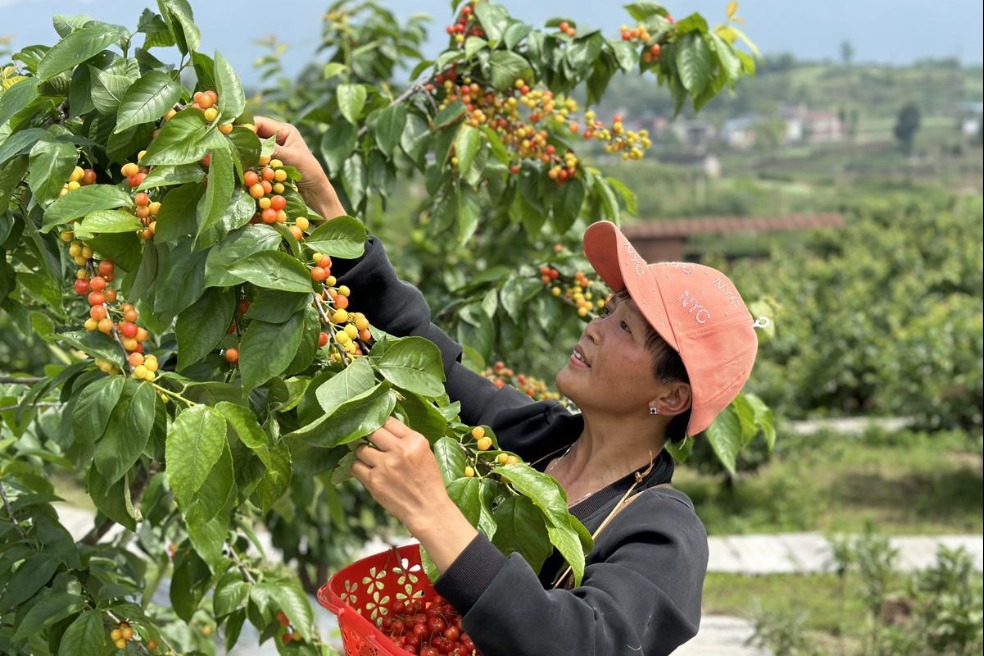Across China: Yellow River floodplain revived by ecological restoration

YINCHUAN -- Sun Huizhi's eatery was built from two and a half converted cargo-train carriages. Structures that were once used to carry coal are now packed with customers enjoying local specialty food, such as mutton, beef and meatballs.
"The deserted carriages are part of the local industrial legacy, showing the mining history of our city," Sun said with a smile.
Sun, 52, is from Yinhe Village, Huinong District, in the coal mining city of Shizuishan, Northwest China's Ningxia Hui autonomous region.
The village is located by a floodplain along the former course of the Yellow River -- China's "Mother River." In the 1980s, the villagers used the floodplain for farming and grazing, leading to desertification.
"When I was a child, the wind blew so hard that people could not open their eyes. In the course of a single winter, the farm canal was filled with sand," said Wang Xuefeng, Party chief of the village.
Ever since ancient times, the ecology of the Yellow River basin has been fragile. For one thing, the plateau glaciers, the Loess Plateau, and the Yellow River Delta are all prone to deterioration. In addition, the river has faced severe pollution problems, resulting in poor water quality.
To address these problems, the Yellow River Protection Law, which came into effect on April 1, stipulates that the country will adhere to integrated ecological preservation and restoration, and will promote systemic management combining natural and artificial restoration, with priority given to natural restoration.
Due to the policy of returning farmland to forests in recent years, villagers stopped cultivating the floodplain, and the ecology around Yinhe Village has been restored. Where once there were a few scattered trees, there is now forest, and the vast wetland attracts a large number of migratory birds, such as egrets and grey cranes, every year.
The village has also attracted tourists to enjoy the green scenery, star gazing and bird watching, with villagers like Sun engaged in tourism-related businesses, such as restaurants, homestays and fruit picking.
Wang said the village has made use of vacant land to build a cultural square, a cultural hall for Yellow River wetland ecology, a gallery for tree-root carvings, a farm to attract families with children and other facilities to receive tourists.
Among the items on display at the root-carving gallery are works based around the 12 Chinese zodiac signs.
Yue Yadong, honorary chairman of the district's federation of literary and art circles, said that developing rural tourism is a way of protecting the local industrial heritage and historical culture.
"Rural tourism needs to be supported by cultural elements. As more tourists come, more cultural highlights will emerge," said Yue.
- Developing Cyberspace Force crucial for network protection
- Thunderstorm delays flights at Guangzhou Baiyun International Airport
- Former deputy general manager of CHN Energy stands trial for bribery
- Echoes of Chinese: Three adventures, one language
- China's wonderland: Dream of the Red Chamber
- New environment and ecology laws submitted for review



































